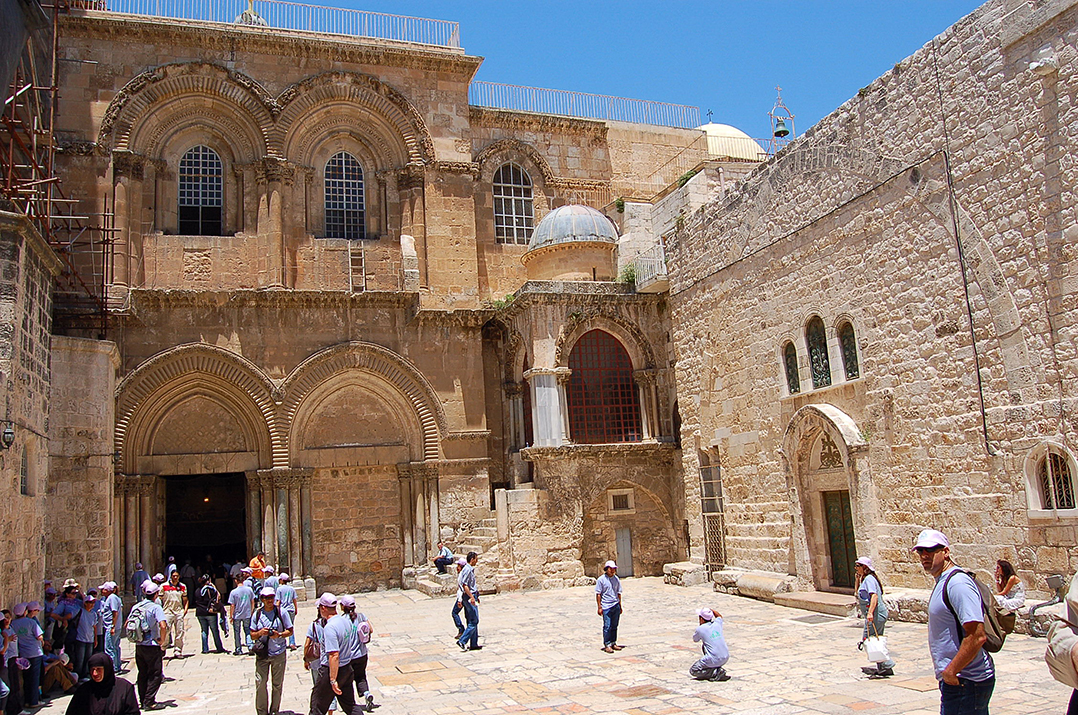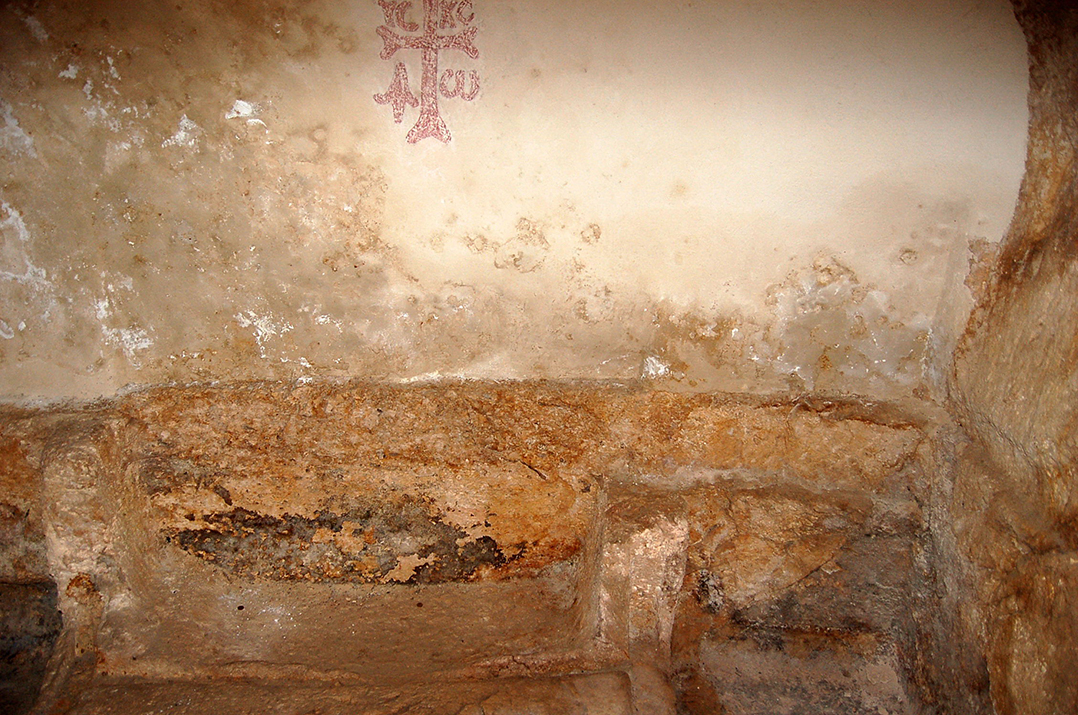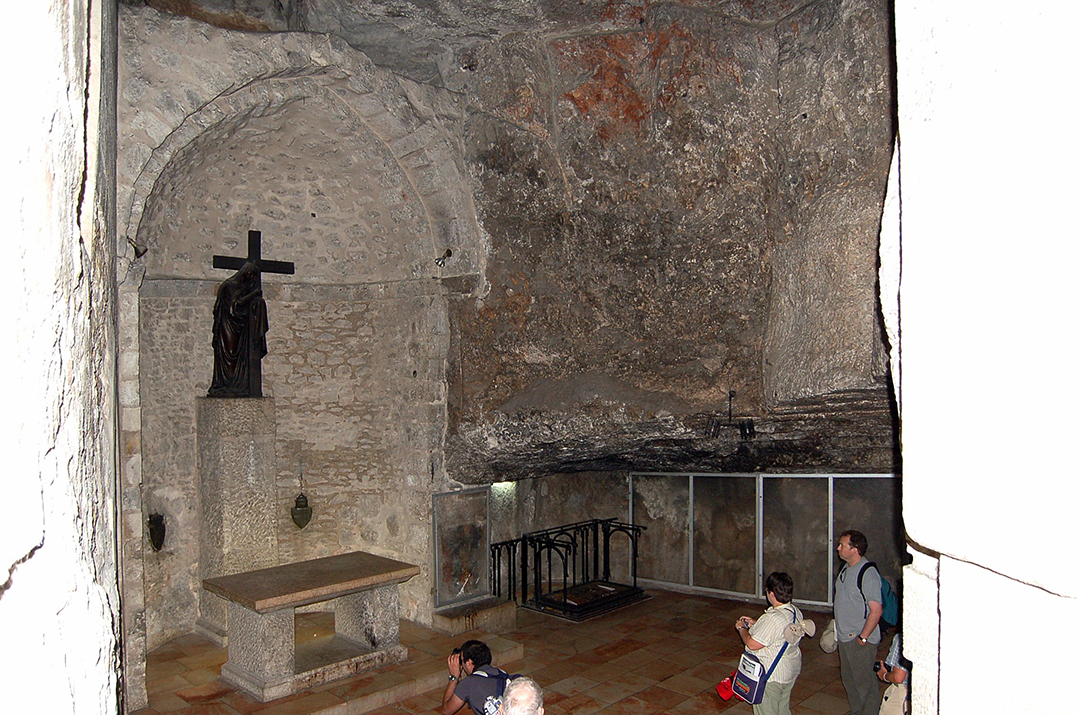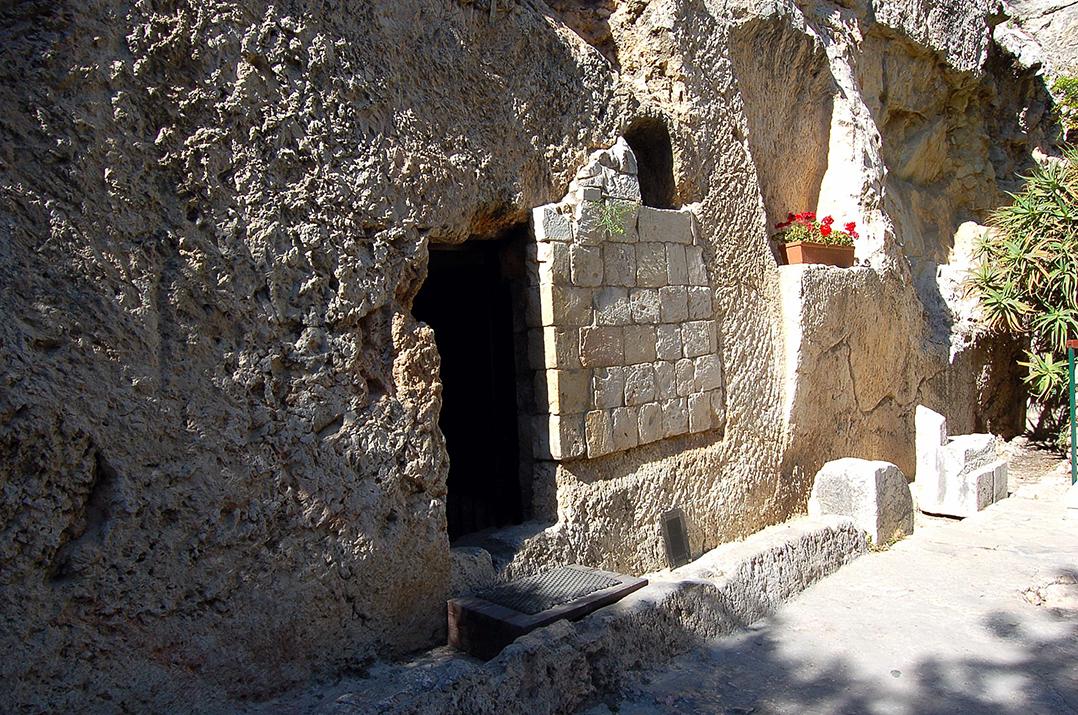In our continuing tour of Israel and the Palestinian Territories, we visit competing sites in Jerusalem associated with the tomb of Jesus.
After Emperor Constantine declared in A.D. 313 that Christianity was legal in the Roman Empire, he sent his 80-year-old mother, Helena, to the Holy Land to find sites important to Christianity. She returned in A.D. 328 claiming she had found not only the tomb of Jesus in Jerusalem, but also a remnant of what she said was the “True Cross” on which Jesus had been crucified. The Church of the Holy Sepulcher was soon built around the tomb, with an underground Chapel of the Finding of the True Cross claimed to be where Helena had found the True Cross. For almost 1,700 years, Christians have made their way to that now cavernous church. For her piety and her discoveries, Helena was recognized as a saint.
In 1883, Protestants were thrilled when Charles Gordon, an English general, found a tomb near a Jerusalem rock formation suggesting a skull, which he thought identified the biblical Golgotha (the skull) where Jesus had been crucified. The tomb itself was in an old garden, where the Bible says it should be. And so, with great fanfare, the Garden Tomb, with its beautiful gardens and peaceful outdoor places to worship, opened to the public.
In 1986, Israeli archaeologist Gabriel Barkay, an authority on Jewish tombs, published an article concluding that the Garden Tomb was not used at the time of Jesus. Consequently, guides at the Garden Tomb no longer claim it held the body of Jesus. But Protestant visitors still worship there, experiencing the same emotions as before. Others continue to experience comparable emotions at the Church of the Holy Sepulcher. As with many other sites in the Holy Land, tradition and belief are as important as archaeology.








